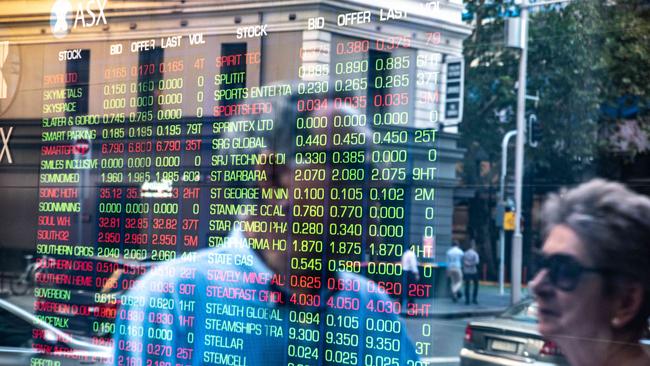Risks on the rise as rush into stocks accelerates
The rush into the sharemarket among investors is accelerating as low cash rates and rebounding share prices combine to promise strong returns.

The rush into the sharemarket among investors is accelerating as low cash rates and rebounding share prices combine to promise strong returns.
But the latest upswing has retail investors taking much bigger risks as traditional “income funds” focused on dividends get the cold shoulder in favour of stocks and funds that promise outperformance on the back of rising share prices.
A new survey shows Australians are considerably more enthusiastic about buying shares just now than shareholders in comparable markets such as the UK, but we also continue to have a strong bias in favour of locally listed favourites.
“I’d categorise this market as exceptionally buoyant on a range of measures,” says Ross Fox, head of Australia and New Zealand at the London-based Calastone group, which just published its global fund flows guide that measures investor activity across the managed funds industry.
The survey found: “Investors have consistently withdrawn money from equity income funds which have been hit by unprecedented dividend cuts of the last year in Australia, Europe and the UK. Sell orders for share income funds have outgunned buy orders by more than two to one since April 2020.”
In fact, income funds have now witnessed money flowing out the door for nine months in a row.
But it’s the sheer pace of the money flowing into the sharemarket from retail investors across Australia that is the most startling aspect of this survey — the first of its type from Calastone to publish a local fund flow index.
Over the past 12 months, the entire volume of money that went into managed funds (unlisted) was $9.5bn, with much of the flow picking up immediately after the crash last year and then a tapering off later in the year.
However, new money started to pour in again over the last quarter when $3bn rolled in and almost half of that figure entered the market in March, the last month of the survey period.
“Australians have been so bullish that they added more capital to equity funds in February and March this year than they did in all of 2019,” Fox says. “Historically, we’ve consistently observed Australian funds attract more equity capital market share. More than a third of the money they added to equity funds in 2020 went into funds that only invest in Australian equities, which suggests a high degree of comfort and confidence in Australian equity fund managers across both active and passive styles.”
Overall, the survey shows that surging retail investor enthusiasm for shares is not contained to millennials or novice investors.
Whether the bias against income funds will last much longer is difficult to call, Fox says. Certainly, there are signs that investors are aware there has been a swing back towards so-called value stocks, especially on Wall Street, since the start of the year.
To deal with volatility, it looks like investors are busily chasing market momentum rather than settling into any defensive forms of investing: overall fund turnover has risen sharply, running at levels one-third higher than in 2019.
“The record turnover in equity funds in March this year does suggest that we’re seeing a certain amount of switching between growth and value equity funds as inflation expectations permeate markets,” Fox says. “Big Tech has come off the boil as its ‘jam tomorrow’ valuations get impacted by higher long bond yields, while stocks considered ‘value’ such as mining companies have proven more attractive again.”








To join the conversation, please log in. Don't have an account? Register
Join the conversation, you are commenting as Logout